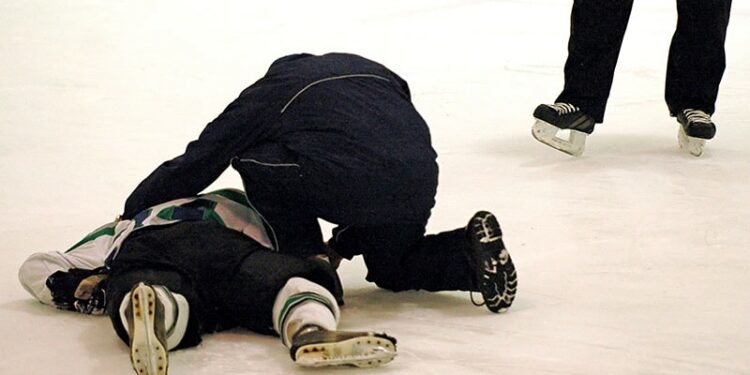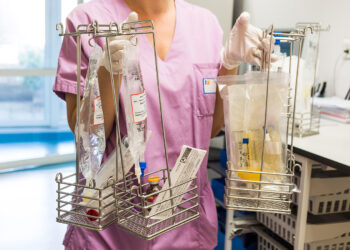[ad_1]
Sports-related sudden cardiac arrest (Sr-SCA) happens infrequently in Canada, though the incidents are widely witnessed and publicized, according to new data from five provinces.
The high rate of survival (52%) was surprising and gratifying, coauthor Paul Dorian, MD, MSc, cardiologist at Li Ka Shing Knowledge Institute at Unity Health Toronto, Toronto, Ontario, Canada, told Medscape Medical News. When he started as a researcher in this area about 30 years ago, “the survival from cardiac arrest was about 7%” and about 15% in public places, he said. “If you arrest during sport, there’s more likely to be witnesses, and more likely to be a defibrillator on scene.”
The research was published online on February 5 in the Canadian Journal of Cardiology.
Events During Hockey
Researchers studied the frequency and characteristics of Sr-SCA in British Columbia, Saskatchewan, Ontario, Quebec, and Nova Scotia (total population, 10.9 million). Their retrospective cohort study used data from the Canadian Sudden Cardiac Arrest Network and included data on SCAs that occurred in people aged 18-85 years during or up to 1 hour after playing sports. Eligible cases included all SCAs treated by emergency medical services (EMS). SCAs were defined as lack of pulse and requiring CPR or defibrillation) with a presumed cardiac cause (for instance, no overdose or trauma).
A total of 18,769 SCAs occurred between January 1, 2016, and December 31, 2020, and 339 (1.8%) were related to sports. Patients’ average age was 58 years. Sr-SCA was rare, with an incidence of 1.2 per 100,000 person-years.The outcome occurred mostly in men (93.8%) and was highly survivable (52.0% survived to hospital discharge, which varied according to sport). Ice hockey was the sport with the most occurrences.
Almost two thirds of SCAs occurred in recreational facilities (60.2%), with high rates of bystander witnessing (75.6%) and bystander cardiopulmonary resuscitation (73.6%). Bystanders delivered automated external defibrillator (AED) shocks in 36.1% of the cases. Median EMS response time was 6.2 minutes.
Among the five sports where most of the SCAs occurred, ice hockey had the highest rates of survival to hospital discharge (72.2%), followed by running/jogging (61.5%) and ball sports (61.5%). Fewer patients with Sr-SCAs during cycling (43.4%) or home or gym workout (40.0%) survived to discharge.
Requirements for AEDs
The high survivability rate is gratifying because in Canada, “there are no organized government programs to compel that AEDs be present in gyms or on playing fields,” said Dorian. Except for Manitoba, “there’s no law that requires AEDs to be present anywhere. We were worried that the mortality rate might be higher than it was.”
Researchers are strong advocates of having more AEDs, more training, and more education, “but the good news is we’re not starting from nothing,” Dorian added.
The large numbers of SCAs in hockey occurred mostly in middle-aged men who may not have played regularly in years. “If you haven’t played hockey for 20 years and you’re overweight and a smoker, you better check with your doctor to make sure that it’s safe,” said Dorian. “Also, someone on the team needs to know where the defibrillator is and have an informal plan.”
Dorian emphasized that the data show that the probability of a sudden arrest in sports is low, despite the publicity when it happens. “What is the risk of doing high-intensity sport if you are reasonably healthy? The answer is that it’s pretty safe.”
The authors identified several limitations of their study. Although they used survival to discharge as an outcome, they did not measure survival with favorable neurological outcome, which is a more patient-centered outcome. They also did not have access to information on patients’ in-hospital care, medical history, or fitness, which may have led to confounding.
Underreporting Possible
Mehrdad Golian, MD, a cardiologist and invasive electrophysiologist at the University of Ottawa Heart Institute, Ottawa, Ontario, Canada, told Medscape Medical News that he, too, was heartened to see that the survival rate in this study was greater than anticipated and higher than the survival rates of the incident in other countries. Golian did not participate in the study.
The generalizability of the study also increases the importance of the findings, he said. “It’s not looking only at competitive athletes, but also at the general population in five provinces,” he noted.
Golian pointed to the high rates of bystander witnessing and bystander cardiopulmonary resuscitation and said that efforts to promote awareness and training in those areas, as well as the number of publicly available AEDs, should increase.
The bystander assistance rates likely contribute to the high survival rate, he said, as well as the average 6-minute response from EMS. Studies in Europe and Japan have shown response times of 8-10 minutes, he said.
Golian also pointed out that the study is observational and based on EMS reports. If EMS doesn’t report the event and it happens outside a public venue, he noted, then the events may be underreported.
Funding for this study was provided by the Cardiovascular Network of Canada. Dorian and Golian reported having no relevant financial relationships.
Marcia Frellick is a Chicago-based independent healthcare journalist.
[ad_2]
Source link : https://www.medscape.com/viewarticle/sports-related-sudden-cardiac-arrest-rare-highly-survivable-2025a100048x?src=rss
Author :
Publish date : 2025-02-19 07:17:27
Copyright for syndicated content belongs to the linked Source.














